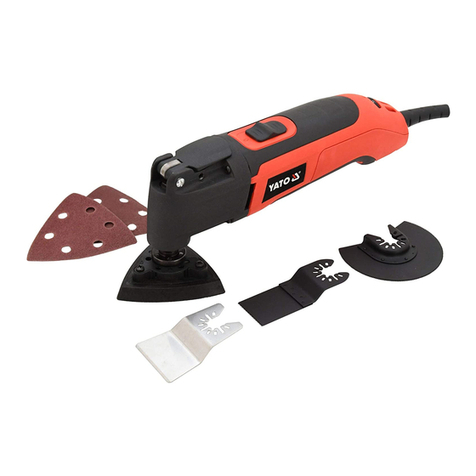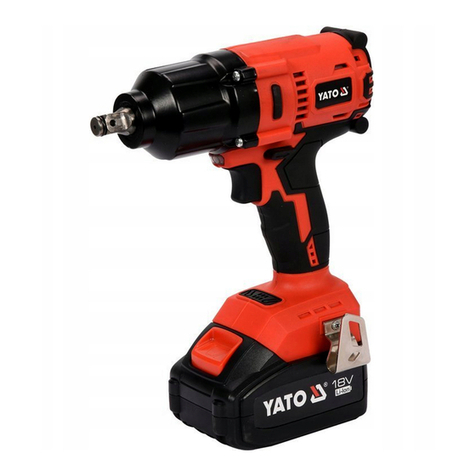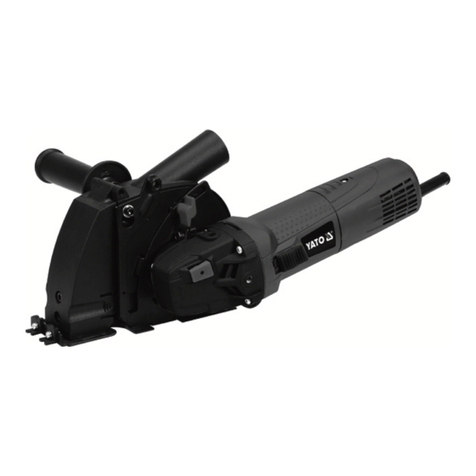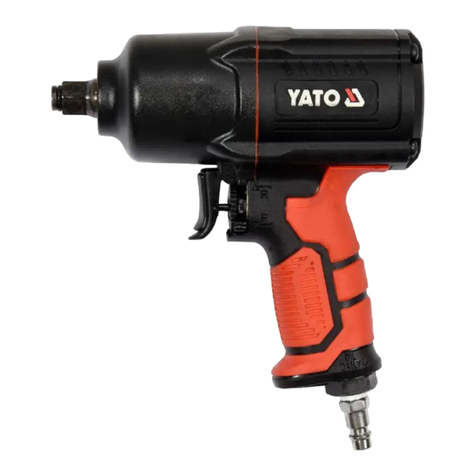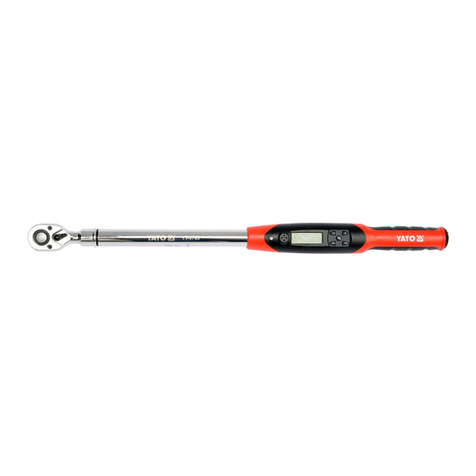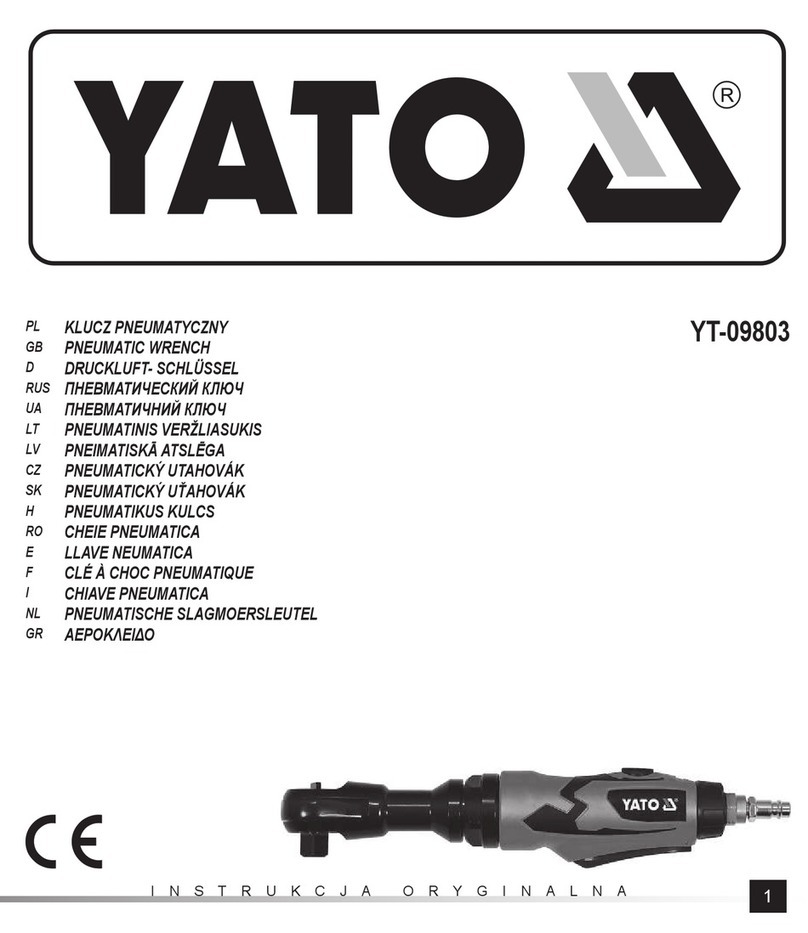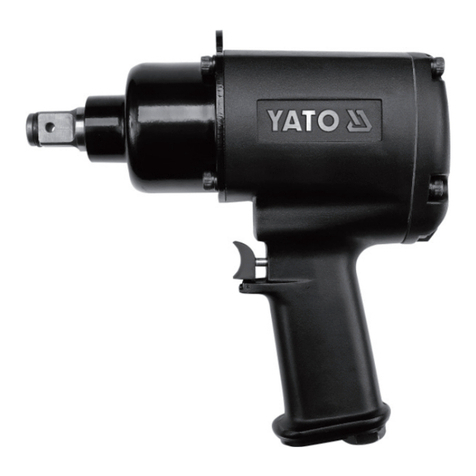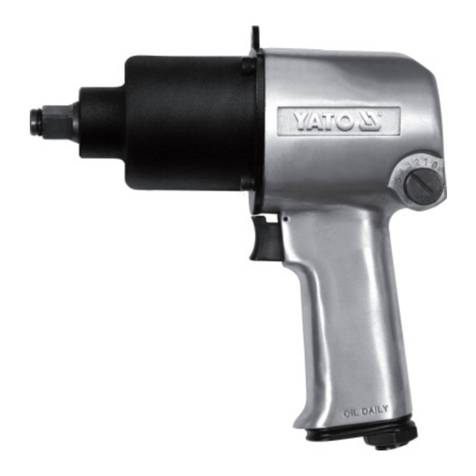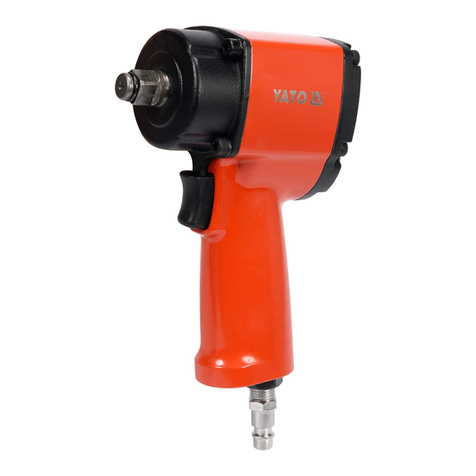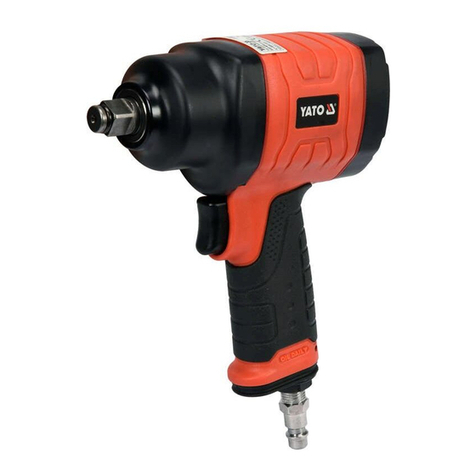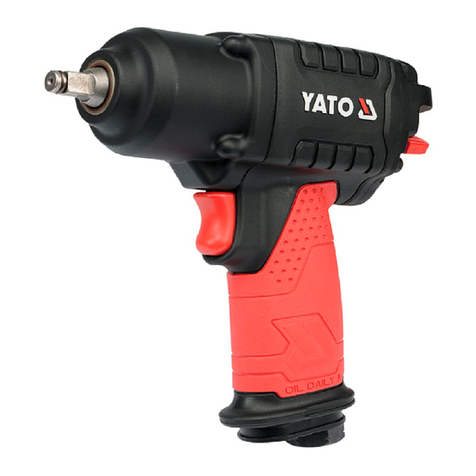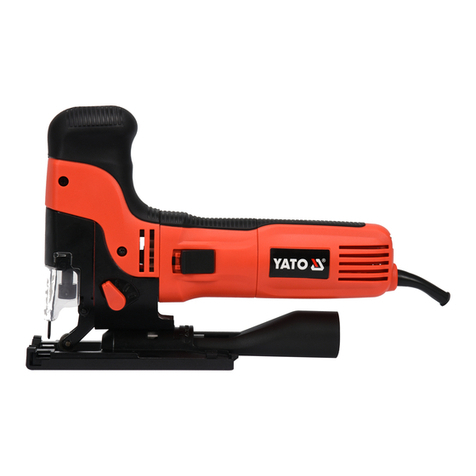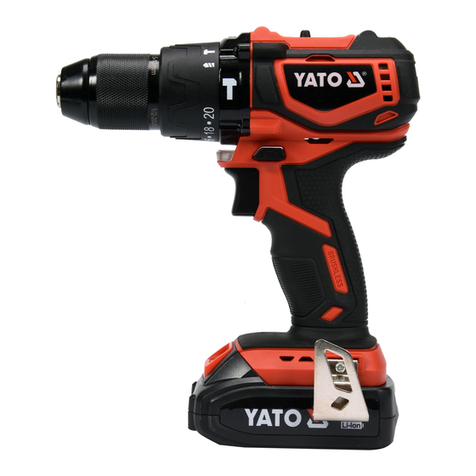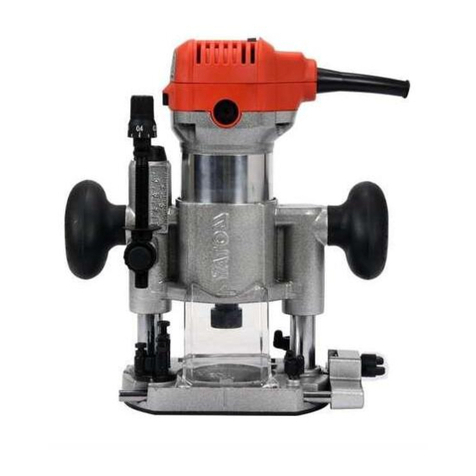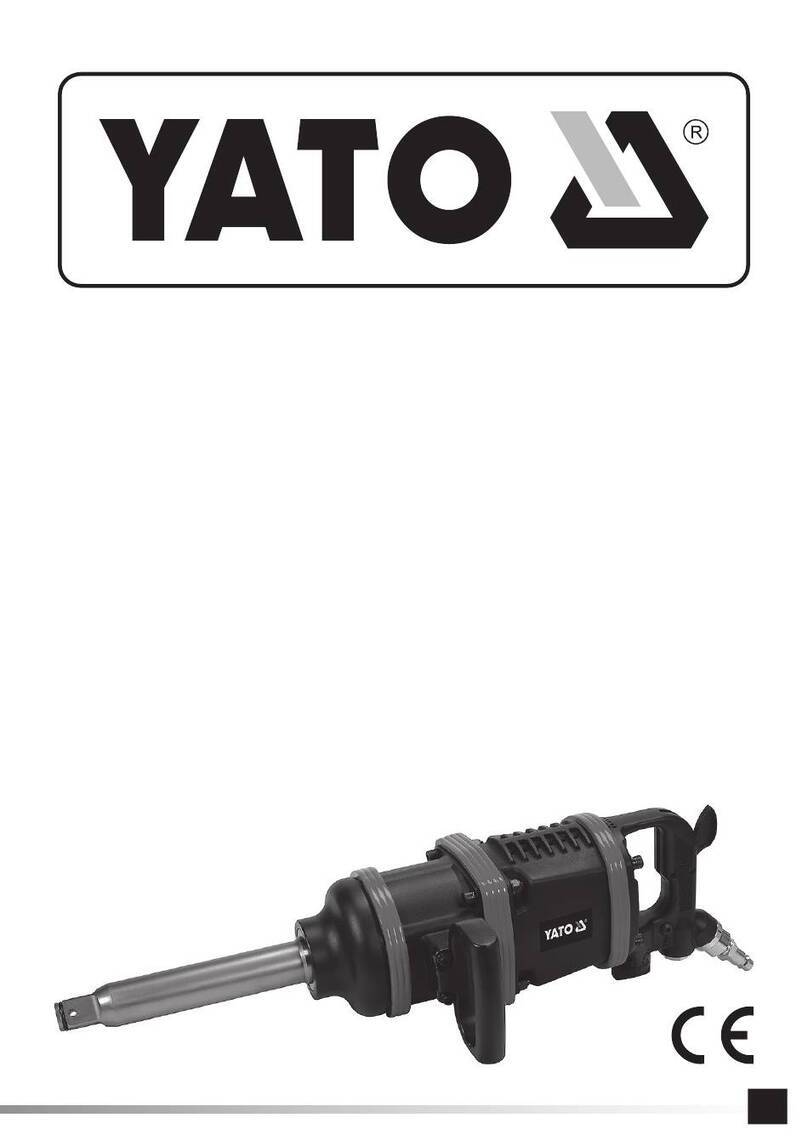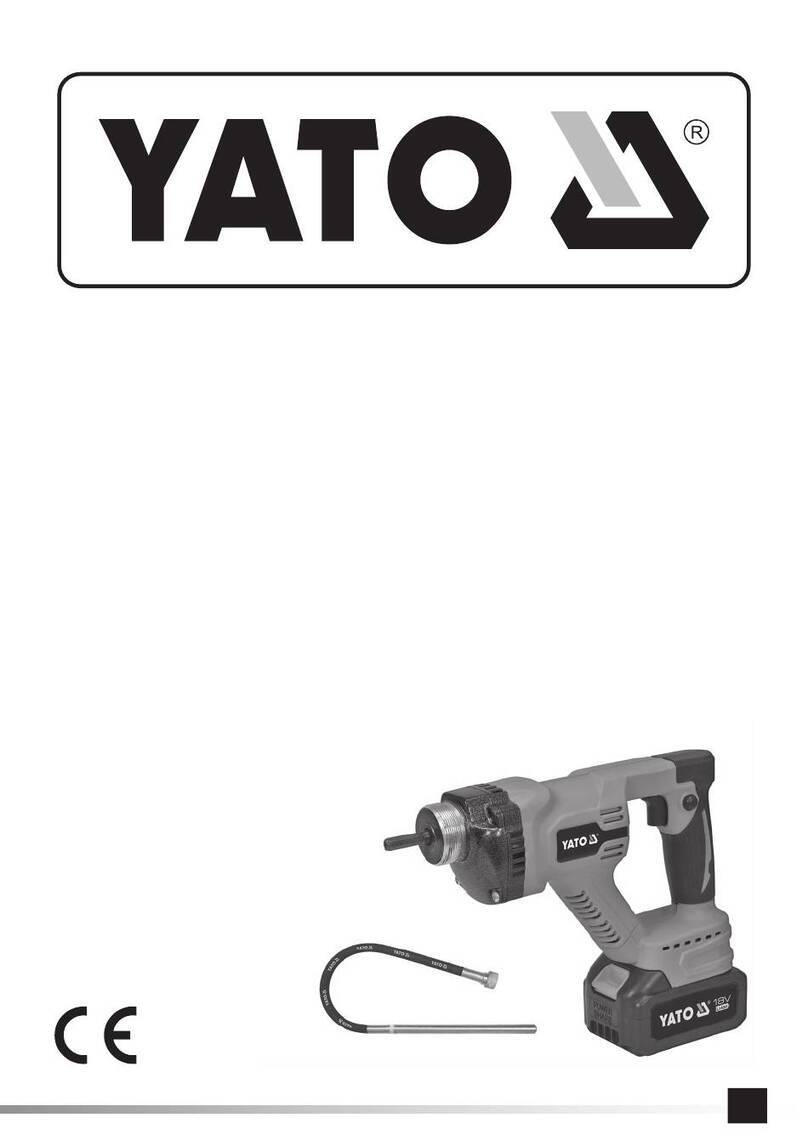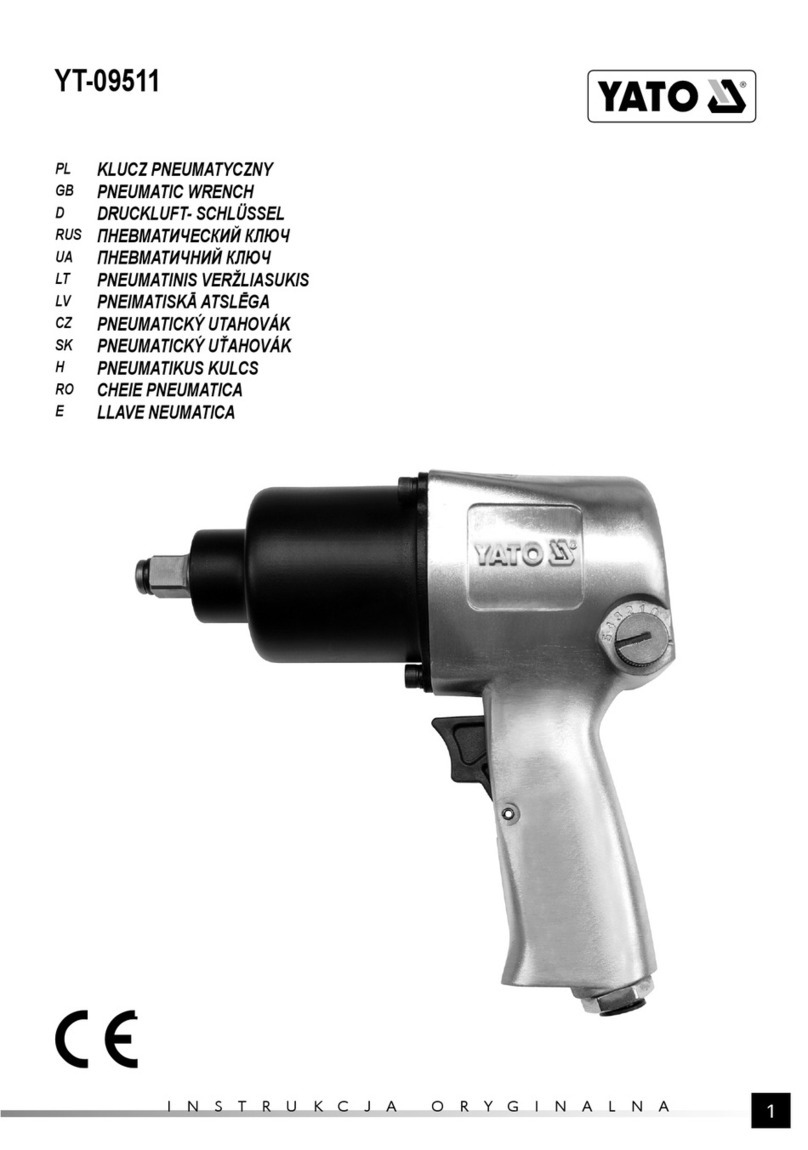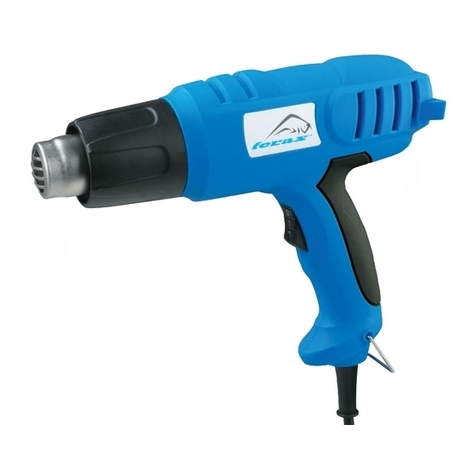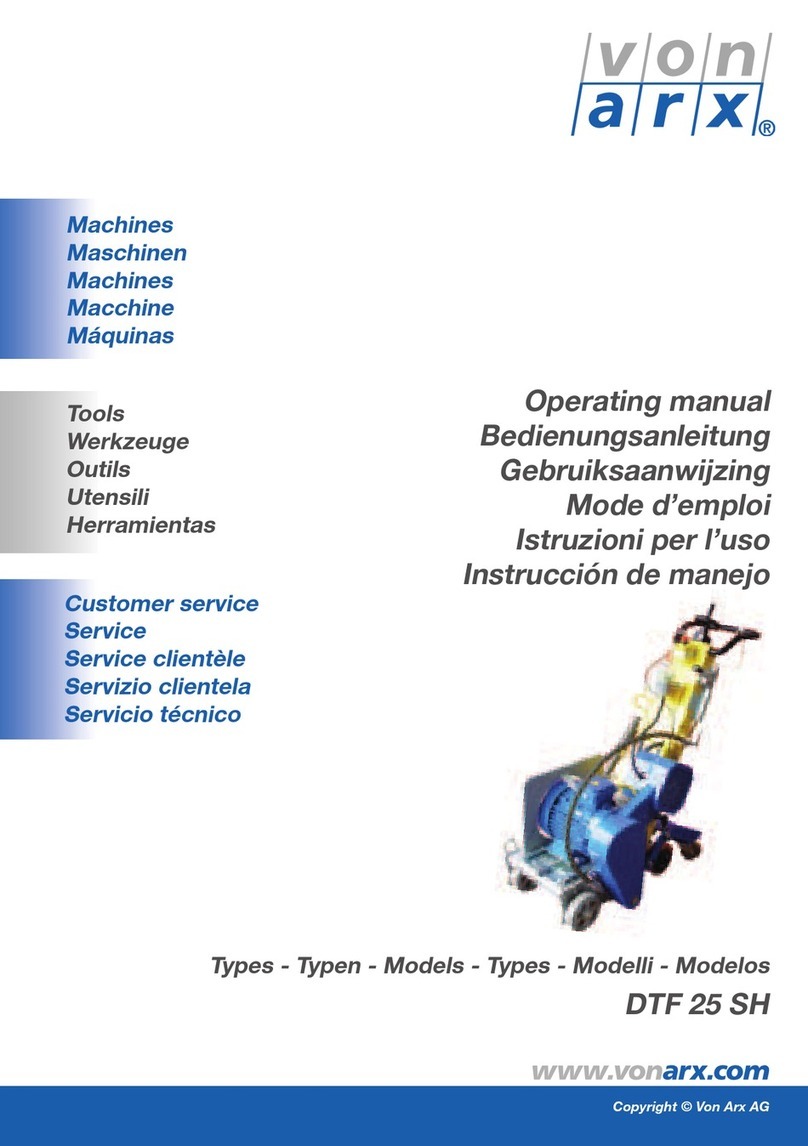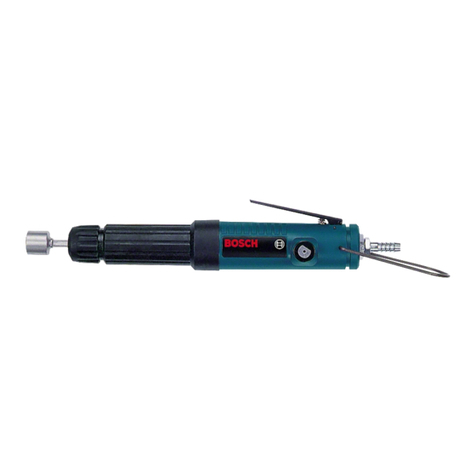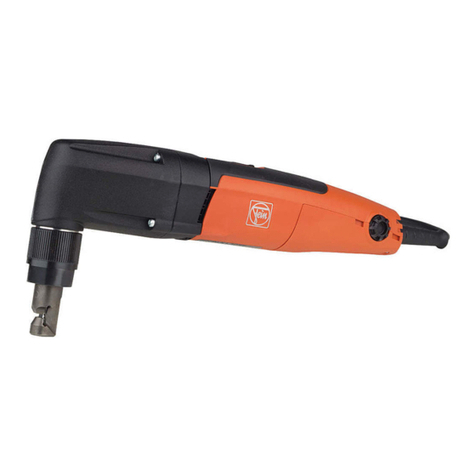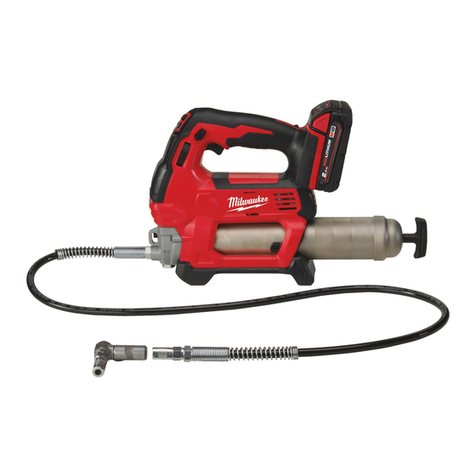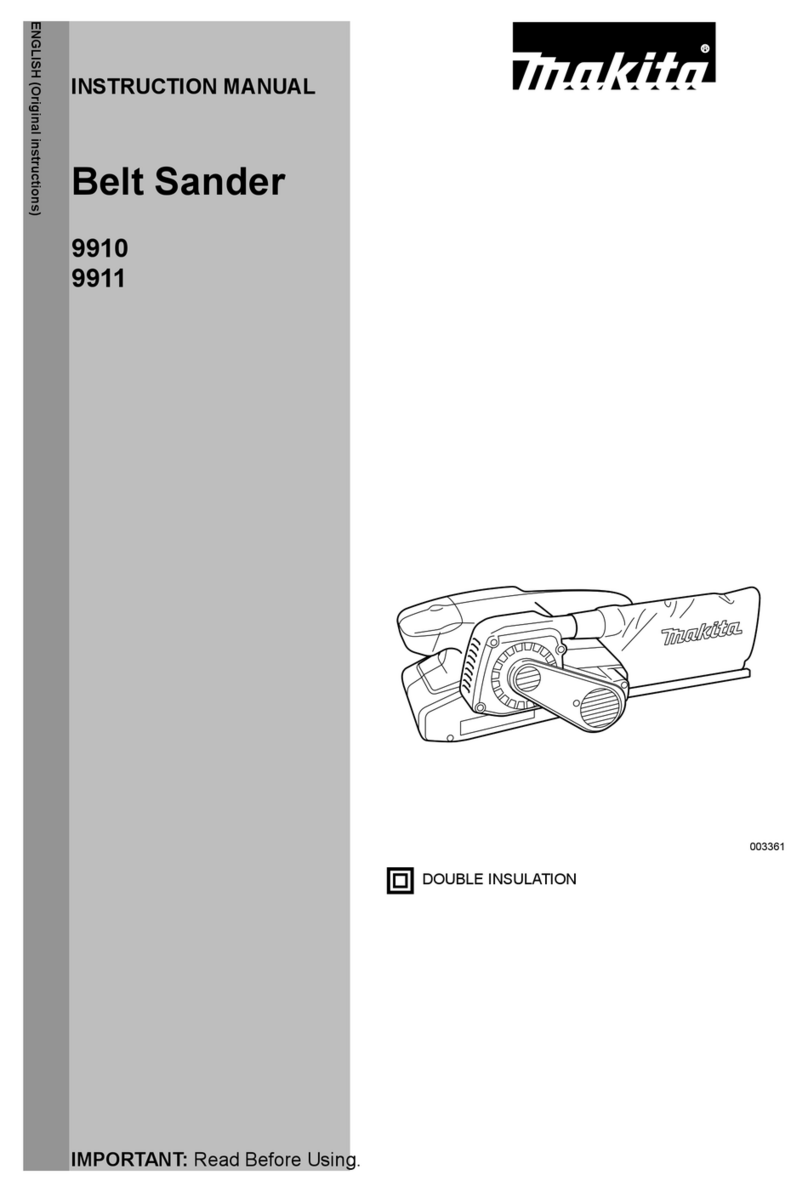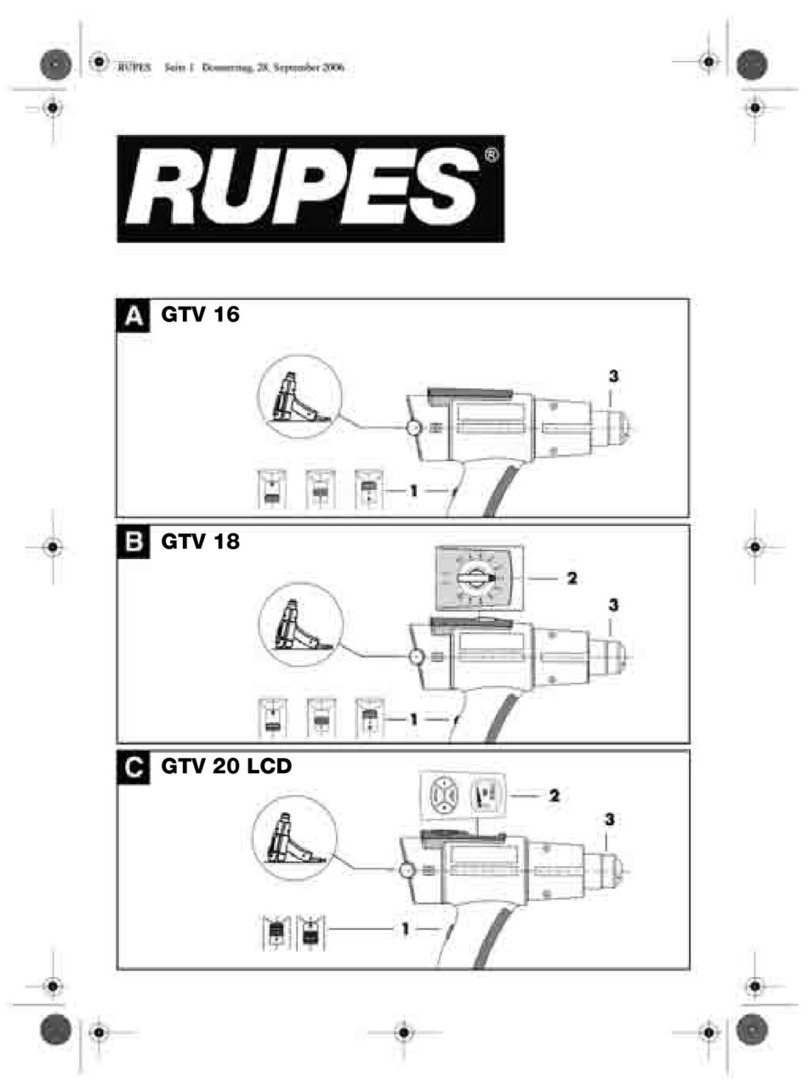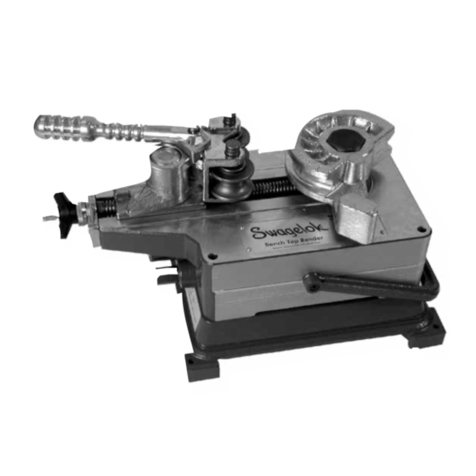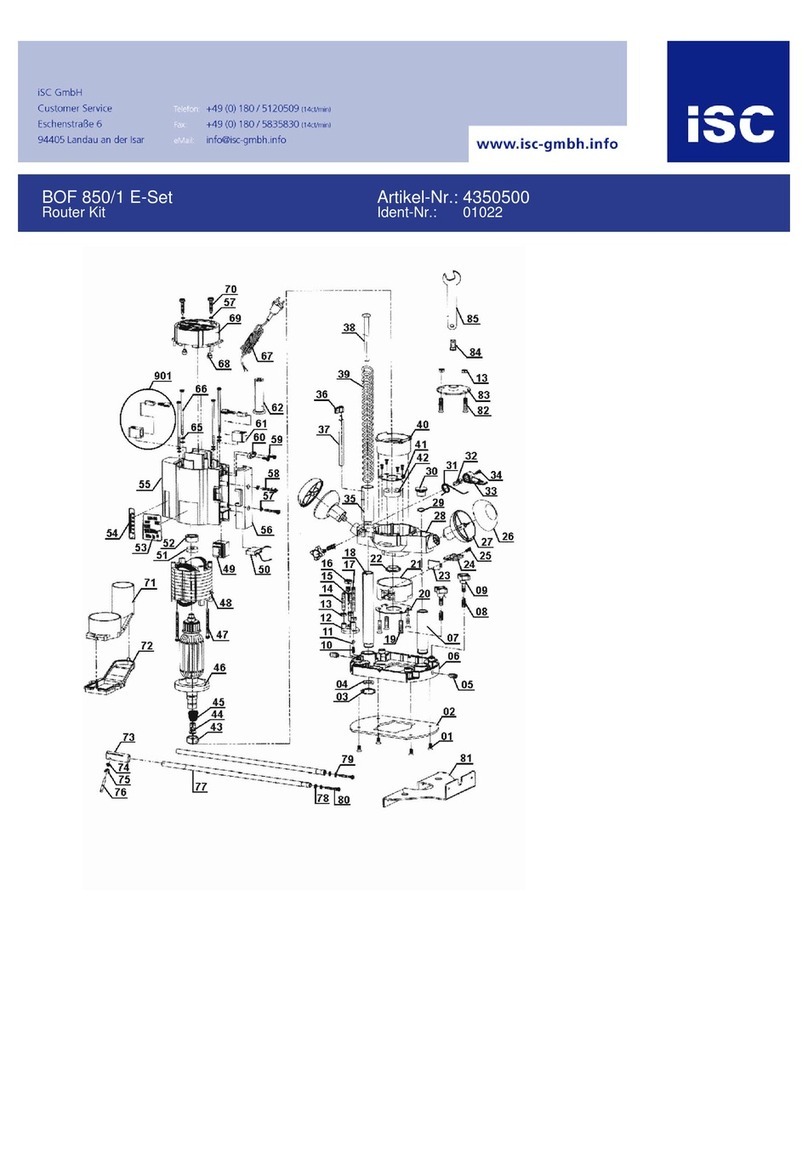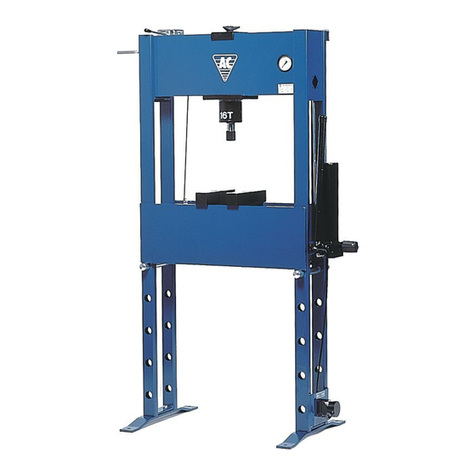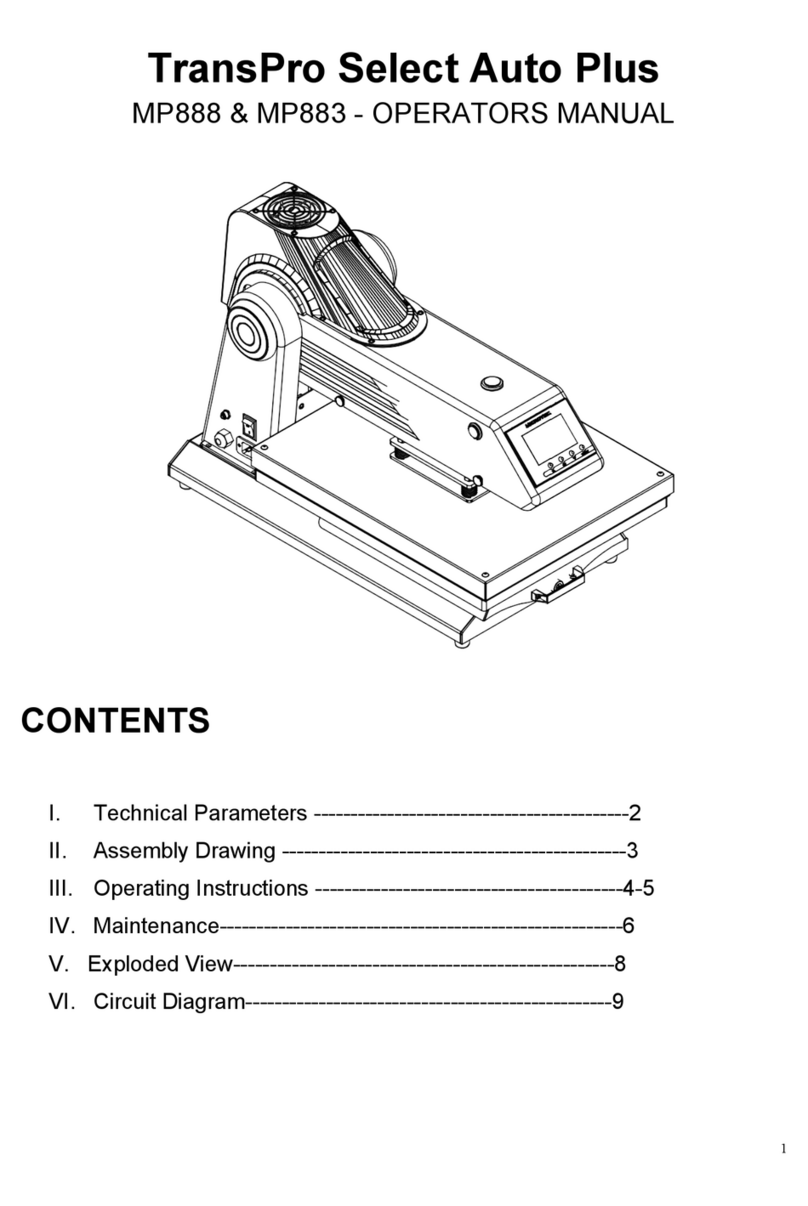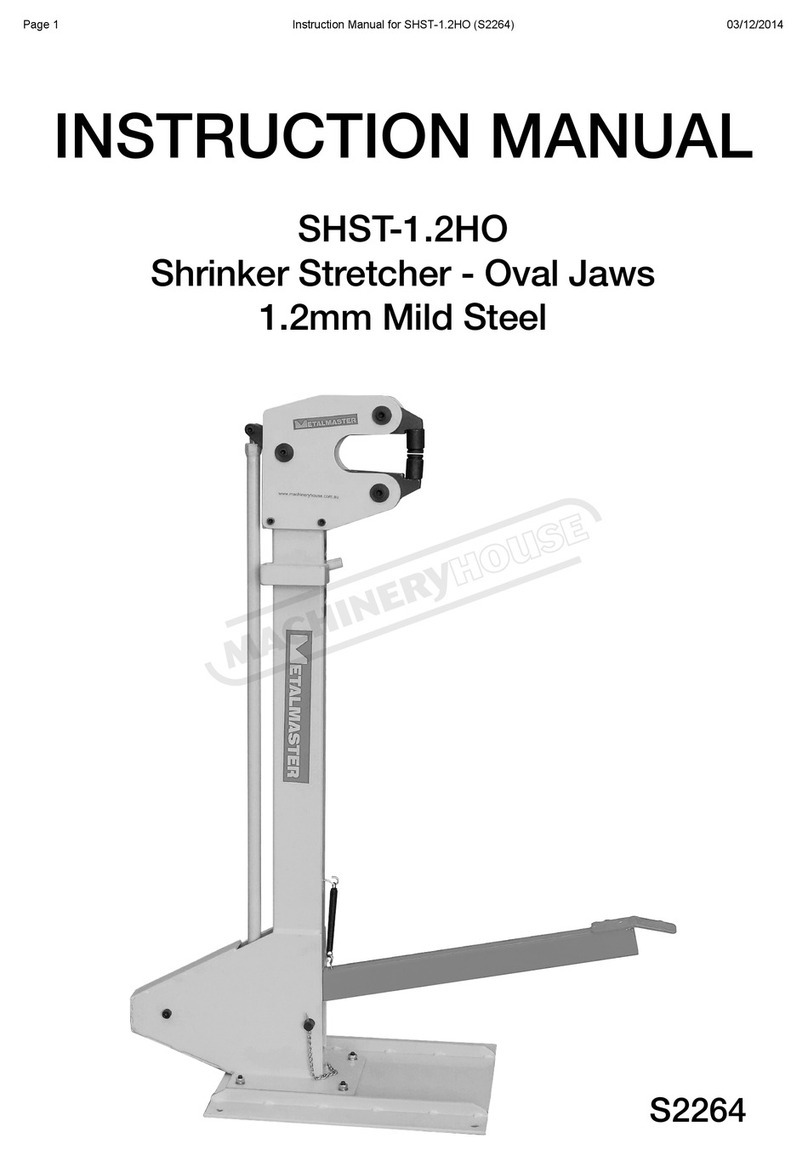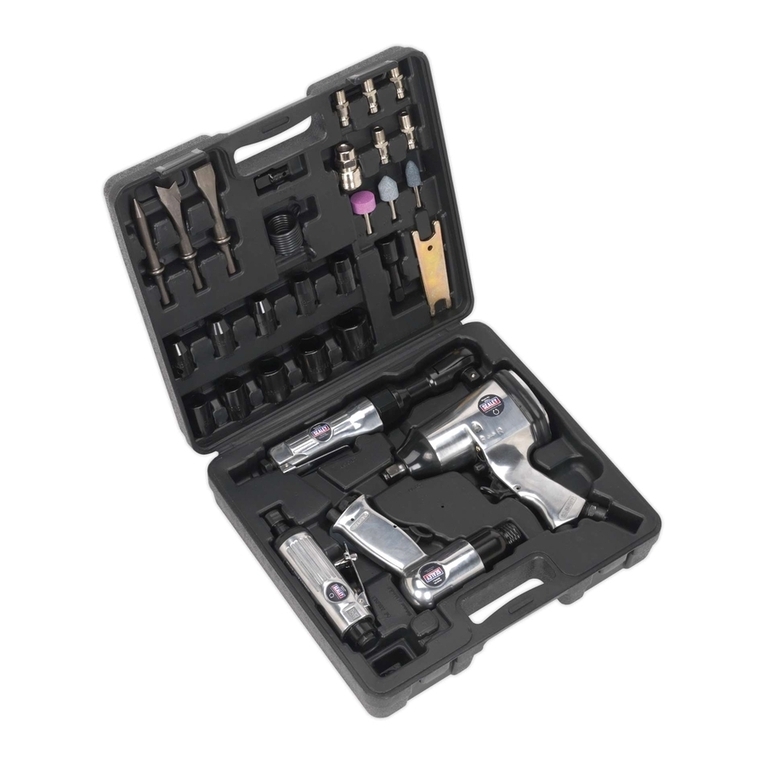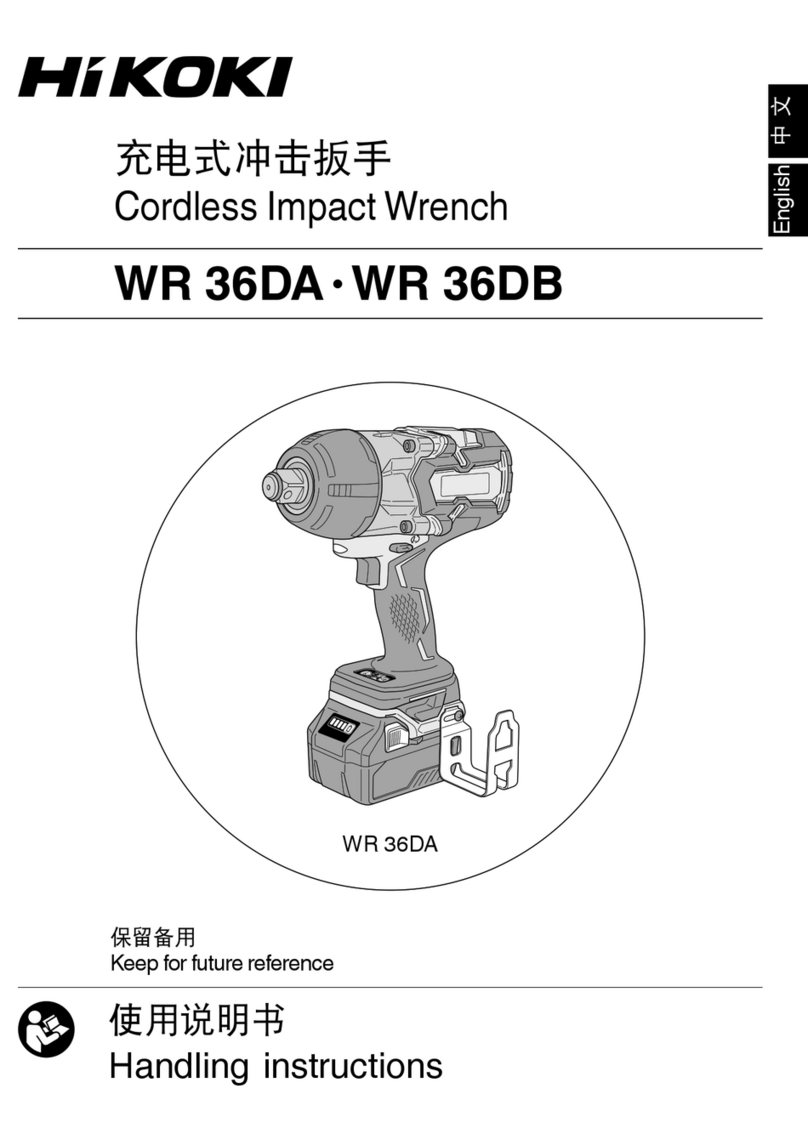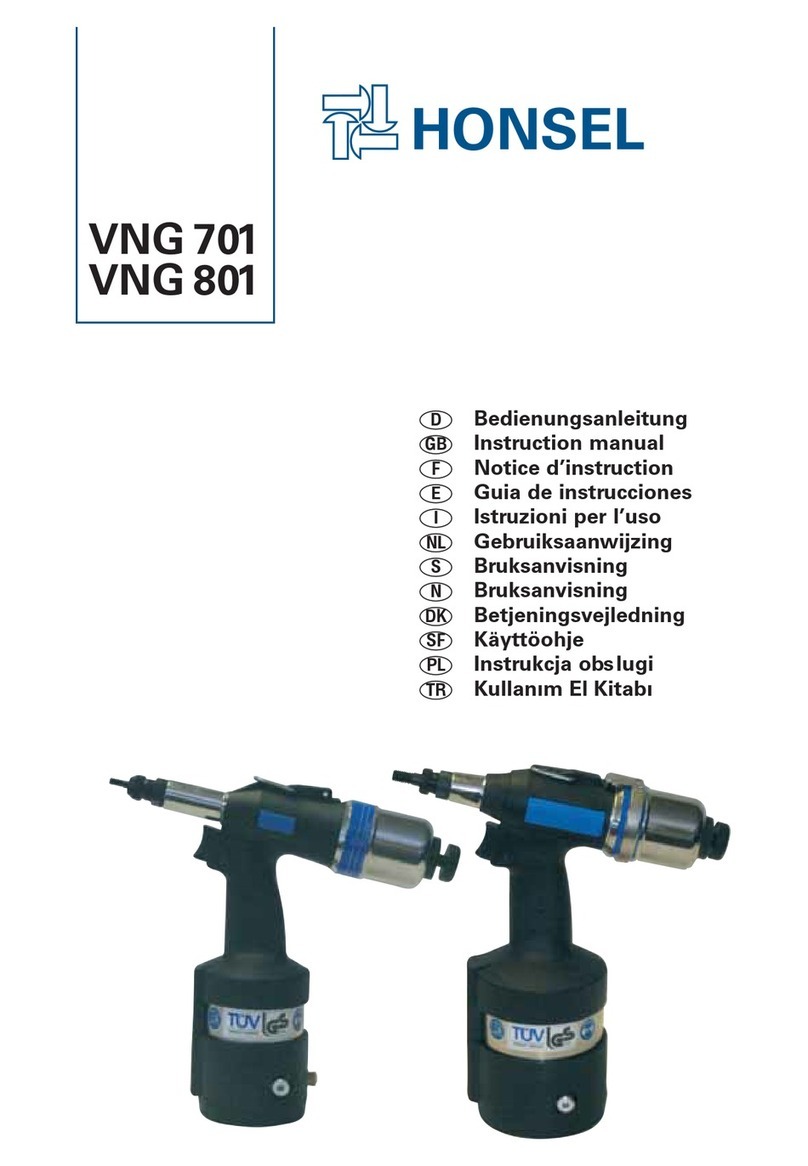YATO YT-8250 User manual

1
234
56
1
24
5
6
YT-8253YT-8252YT-8251YT-8250
YT-8256YT-8255YT-8254
1. casing
2. soldering tip
3. heating element
4. cable and plug
5. soldering tip fixture
6. protecting sleeve
PROPERTIES OF THE TOOL
The soldering tool has been designed for the purpose of soldering metals with tin and
lead binders for soft soldering. The tool has been designed exclusively for household
applications and must not be used professionally, i.e. in plants and for profit-making
purposes. A correct, reliable and safe functioning of the tool depends upon appropriate
operation, and therefore: Before work with the tool, read the complete instruction
and keep it. The supplier will not be held responsible for any damage and injuries
which occur as a result of inappropriate applications of the tool, failure to observe safety
regulations and the recommendations specified in these instructions. Improper applica-
tion of the tool will also cause cancellation of any guarantee rights due to incompliance
with the sales contract.
EQUIPMENT
The soldering tool is provided complete and has no additional accessories.
TECHNICAL DATA
Parameter Unit of
measurement Value
Catalogue number YT-8250 YT-8251 YT-8252 YT-8253
Power supply mains
voltage [V] ~230
Power supply mains
frequency [Hz] 50
Rated power [W] 30 40 50 60
Heating time [min] 5555
Working temperature
of the soldering tip [OC] 300 320 340 350
Maximum temperature
of the soldering tip [OC] 400 420 440 450
Dimensions
of the soldering tip [mm] Ø3,8 x
70,8
Ø4,9 x
75,5
Ø5,9 x
76,5
Ø5,9 x
76,5
Durability
of the soldering tip
[soldering
points] 60 000
Mass [kg] 0,04 0,06 0,07 0,07
Electric insulation class I
Parameter Unit of
measurement Value
Catalogue number YT-8254 YT-8255 YT-8256
Power supply mains
voltage [V] ~230
Power supply mains
frequency [Hz] 50
Rated power [W] 15 25 35
Heating time [min] 3 3 3
Working temperature
of the soldering tip [OC] 300 320 350
Maximum temperature
of the soldering tip [OC] 400 420 450
Dimensions
of the soldering tip [mm] Ø6,4 x 42,7 Ø6,4 x 42,7 Ø8,0 x 57
Durability
of the soldering tip
[soldering
points] 60 000
Mass [kg] 0,04 0,05 0,07
Electric insulation class I
GENERAL SAFETY CONDITIONS
NOTE! Get acquainted with all the instructions below. Failure to observe them may
lead to an electric shock, fire or injuries. The notion of electric tool used in the instruc-
tions applies to all the tools which are powered with electric current, both wire tools
and wireless ones.
OBSERVE THE FOLLOWING INSTRUCTIONS
Place of work
The place of work must be properly illuminated and clean. Disorder and poor il-
lumination may be a cause of accidents. Do not work with electric tools in explosive
environments, or those which contain inflammable liquids, gases or vapours.
Electric tools generate sparks, which may cause a fire in case of contact with inflam-
mable gases or vapours. Do not allow children and outsiders to the place of work.
A lack of concentration may result in a loss of control over the tool.
Electric safety
The plug of the power supply cable must fit the mains socket. Do not modify
the plug. Do not use any adapters whatsoever in order to adapt the plug to the
socket. Unmodified plug which fits the socket reduces the risk of an electric shock.
Avoid contact with grounded surfaces, such as pipes, heaters and refrigerators.
Grounding of the body increases the risk of an electric shock. Do not expose electric
tools to precipitation or humidity. Water and humidity which gets into the electric
tool increases the risk of an electric shock. Do not overload the power supply cable.
Do not use the power supply cable in order to carry the tool or to connect and
disconnect the plug from the mains socket. Avoid contact of the power supply
cable with heat, oils, sharp tools and moving elements. Damage to the power sup-
ply cable increases the risk of an electric shock. In case work is realised outside
closed areas, it is necessary to use extension cords designed for applications
outside closed areas. Using a correct extension cord permits to reduce the risk of
an electric shock.
Personal safety
Commence work in good physical and psychological conditions. Pay attention
RESISTANCE SOLDERING TOOL

to what you do. Do not work if you are tired or under effects of medicines or
alcohol. Even a moment’s inattention during work may lead to serious injuries. Always
use individual means of protection. Always wear goggles. Using individual means
of protection, such as dust-masks, protective shoes, helmets and hearing protections
permits to reduce the risk of serious injuries. Avoid accidental activation of the tool.
Make sure the switch is in the OFF position, before you connect the tool to the
mains. Holding the tool with a finger on the switch or connecting an electric tool when
the switch is in the ON position may lead to serious injuries. Before you turn an elec-
tric tool on remove all the spanners and other tools, which have been used for
adjustments. A spanner left on rotating elements of the tool may lead to serious inju-
ries. Keep your balance. Maintain an appropriate position. It will permit to control
the electric tool in case of unpredicted situations during its operation. Use protec-
tive clothes. Do not wear loose clothes or jewellery. Keep your hair, clothes and
gloves away from moving elements of the electric tool. Loose clothes, jewellery or
long hair may get caught on moving elements of the tool. Use dust extractors or dust
containers, if the tool is equipped with any. Make sure they are properly con-
nected. Using of dust extractors permits to reduce the risk of serious injuries.
Operation of the electric tool
Do not overload the electric tool. Use a proper tool for the given purpose. A cor-
rect selection of the tool for the given work will result in a more efficient and safer
work. Do not use the electric tool if the switch is not functioning properly. A tool
which may not be controlled by means of a switch is dangerous and must be repaired.
Disconnect the plug from the mains socket before any adjustment, replacement
of accessories or storage of the tool. It will permit to avoid accidental activation of the
electric tool. Store the tool away from children. Do not allow untrained persons to
operate the tool. An electric tool may be dangerous in hands of an untrained person.
Make sure the tool is properly maintained. Check the tool in order to detects
any unfitting or loose moving elements. Check whether the elements of the tool
are not damaged. In case any damaged elements of the tool are detected, they
must be repaired before the electric tool is operated. Many accidents are caused
by improper maintenance of tools. Cutting tools must be sharp and clean. Properly
maintained cutting tools are easier to control during work. Use electric tools and ac-
cessories in accordance with the aforementioned instructions. Use the tool in ac-
cordance with its purpose, taking into account the kind and conditions of work.
Should the tool be used for other applications than the ones it has been designed for,
the risk of a dangerous situation increases.
Repairs
The tool may be repaired only by authorised service centres, which must use
solely original spare parts. It will guarantee a proper level of safety of operation of
the electric tool.
SAFETY USE INSTRUCTIONS
The soldering tool may be connected solely to the 230V/50Hz mains. In order to avoid
fire and burns, always use special non-flammable bases under the soldering tool. Once
the soldering tool has been heated, it must be held solely by the handle. Touching of
the soldering tip or other metal elements of a hot soldering tool may cause burns. Do
not permit any contact of the power supply cable with hot metal elements since this
might result in an electric shock. If the cable is damaged, the soldering tool must be
disconnected from the power supply mains. It is prohibited to work with a soldering
tool with a damaged power supply cable. A damaged cable must by replaced by an
authorised service centre. Do not repair damaged electric cables of the tool. After
work, the tool must be placed on the base to cool. This is the only acceptable manner of
cooling the tool. Do not cool the soldering tool placing it in water, since this may cause
an electric shock. The soldering tip of the soldering tool must be replaced solely when
the power supply if off. The plug of the power supply cable must be disconnected from
the mains. Before you proceed to replace the soldering tip, make sure the soldering
tool has cooled. The soldering tip must be inserted until you feel resistance. Fasten
the soldering tip in the fixture securely. Do not heat the soldering tool if a soldering tip
is not installed. A lack of a soldering tip during heating may cause a premature wear of
the heating element of the soldering tool. Before you proceed to heating, make sure
the soldering tip is securely fastened to the soldering tool. Maintain the heating ele-
ment and the soldering tip of the soldering tool clean. It is prohibited to touch electric
cables insulation with a hot soldering tip. It is prohibited to use the soldering tool in high
humidity conditions and in an explosive atmosphere containing gases and explosives
or caustic dusts. Do not solder live element!
PREPARATION FOR WORK AND USING OF THE TOOL
Before work is commenced, make sure the body the cable with a plug and the exten-
sion cords are not damaged. If necessary, the tool must be cleaned and the ventilating
holes cleared. If any damage is detected, it is prohibited to continue working! Note!
All the actions related to replacement or cleaning elements of the soldering tool must
be realised when the power supply of the tool is off, so before you proceed to these
actions: Disconnect the plug of the power supply cable of the tool from the mains
socket! Soldering must be realised by an adult acquainted with the industrial safety
regulations related to soldering. Before the tool is used, make sure the parameters of
the power supply mains correspond to the data presented in the rating plate. Before
soldering, clean thoroughly the metal elements to be soldered as well as the soldering
tip of the soldering tool. In case the soldering tip is burnt, replace it with a new one.
Before soldering, clean the surface to be soldered of any foreign matter, particularly
grease. Do not ever grind the soldering tip with abrasive paper, since it would damage
the soldering tip coating.
Replacement of soldering tip
A used, narrow or dirty soldering tip must be replaced.
For the soldering tool YT-8250, YT-8251, YT-8252, YT-8253 loosen the screws at the
soldering tip, and then remove it and replace with a new one. Make sure the soldering
tip touches the heating element, and then tighten both screws.
For the soldering tool YT-8254, YT-8255, YT-8256 loosen the nut at the handle of the
soldering tool, and then remove the nut along with the protecting sleeve. Replace the
soldering tip, install the protecting sleeve and tighten the nut.
Replacement of the heating element
Replacement of the heating element is complex and it requires adequate knowledge
and authorisation. The heating element must be replaced by qualifies personnel in an
authorised service centre.
Guidelines and recommendations regarding soldering
Select a soldering tool, whose power corresponds to the kind of work to be realised.
Power 15 - 30 W: soldering of elements on integrated circuit boards, soldering of small
electronic elements. Power 40 - 60 W: Soldering of electronic and electric elements
(e.g. switches and contacts). Make sure the soldering tip is clean and properly fixed
in the soldering tool. Place the soldering tool on the base, and then connect it to the
mains. Wait until the soldering tip has reached a required temperature. Commence
soldering using flux and filler metal (soldering tin). The soldering tip must only touch the
places that are meant to be soldered. The filler metal should flow off the soldering tip to
the weld, when it reaches an adequate temperature. Once the task has been finished
and when the tool is not operated, it must be placed on the base.
MAINTENANCE AND INSPECTIONS
NOTE! Before any adjustment, technical service or maintenance, the plug of the tool
must be removed from the mains socket. Once work has been concluded check the
technical conditions of the electric tool by means of visual inspection and evaluation of
the body and handle, the electric cord with the plug, operation of the switch, clearance
of the ventilating holes, sparking of the brushes, the level of noise emitted by the bear-
ings and gears, start and smoothness of operation. Within the guarantee period, the
user must not dismantle the electric tool or replace any subassemblies or components,
since it will make the guarantee void. Any irregularities observed during inspection or
operation of the tool indicate it must be repaired by a service centre. Once work has
concluded, the body, ventilating holes, switches, additional handle and protections
must be cleaned, for example with an air jet (whose pressure must not exceed 0.3
MPa), brush or a dry cloth, without any chemicals or cleaning liquids. The tool and the
handles must be cleaned with a dry, clean cloth.
This manual suits for next models
6
Table of contents
Other YATO Power Tools manuals
